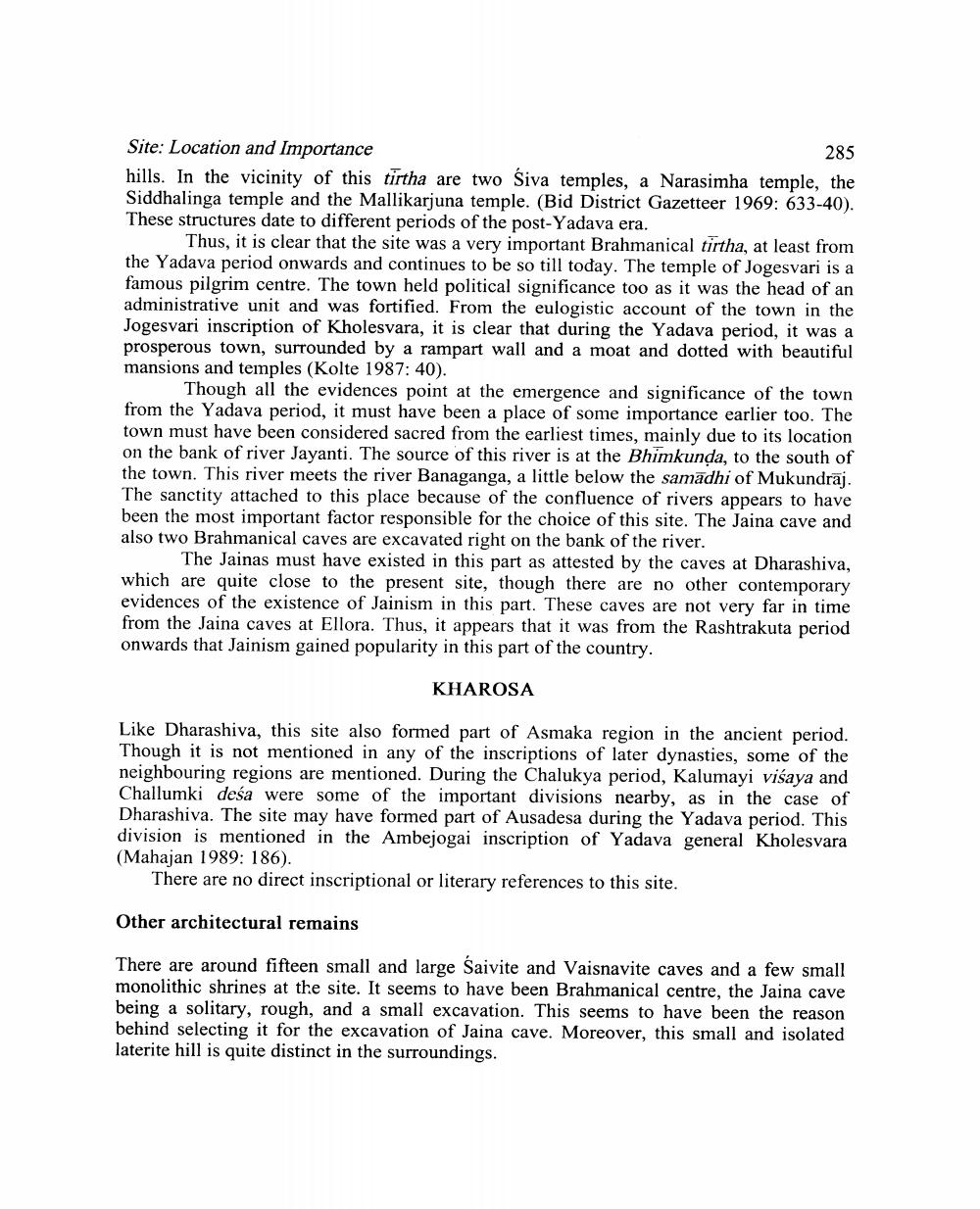________________
Site: Location and Importance
285 hills. In the vicinity of this tirtha are two Siva temples, a Narasimha temple, the Siddhalinga temple and the Mallikarjuna temple. (Bid District Gazetteer 1969: 633-40). These structures date to different periods of the post-Yadava era.
Thus, it is clear that the site was a very important Brahmanical tirtha, at least from the Yadava period onwards and continues to be so till today. The temple of Jogesvari is a famous pilgrim centre. The town held political significance too as it was the head of an administrative unit and was fortified. From the eulogistic account of the town in the Jogesvari inscription of Kholesvara, it is clear that during the Yadava period, it was a prosperous town, surrounded by a rampart wall and a moat and dotted with beautiful mansions and temples (Kolte 1987: 40).
Though all the evidences point at the emergence and significance of the town from the Yadava period, it must have been a place of some importance earlier too. The town must have been considered sacred from the earliest times, mainly due to its location on the bank of river Jayanti. The source of this river is at the Bhimkunda, to the south of the town. This river meets the river Banaganga, a little below the samadhi of Mukundraj. The sanctity attached to this place because of the confluence of rivers appears to have been the most important factor responsible for the choice of this site. The Jaina cave and also two Brahmanical caves are excavated right on the bank of the river.
The Jainas must have existed in this part as attested by the caves at Dharashiva, which are quite close to the present site, though there are no other contemporary evidences of the existence of Jainism in this part. These caves are not very far in time from the Jaina caves at Ellora. Thus, it appears that it was from the Rashtrakuta period onwards that Jainism gained popularity in this part of the country.
KHAROSA
Like Dharashiva, this site also formed part of Asmaka region in the ancient period. Though it is not mentioned in any of the inscriptions of later dynasties, some of the neighbouring regions are mentioned. During the Chalukya period, Kalumayi viếaya and Challumki deśa were some of the important divisions nearby, as in the case of Dharashiva. The site may have formed part of Ausadesa during the Yadava period. This division is mentioned in the Ambejogai inscription of Yadava general Kholesvara (Mahajan 1989: 186).
There are no direct inscriptional or literary references to this site.
Other architectural remains
There are around fifteen small and large Saivite and Vaisnavite caves and a few small monolithic shrines at the site. It seems to have been Brahmanical centre, the Jaina cave being a solitary, rough, and a small excavation. This seems to have been the reason behind selecting it for the excavation of Jaina cave. Moreover, this small and isolated laterite hill is quite distinct in the surroundings.




